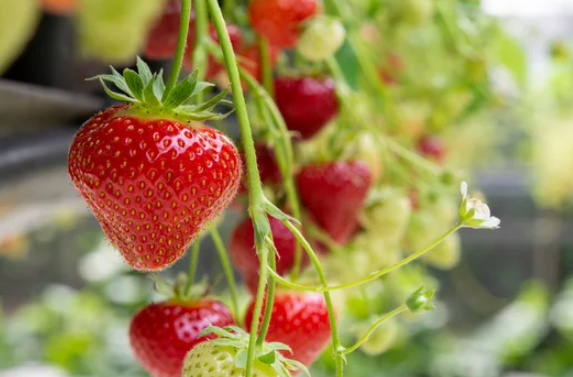Strawberries are one of the most beloved fruits out there and for good reason.
They’re juicy, sweet, and packed with flavor.
However, when it comes to how these little red fruits grow, there seems to be a bit of confusion.
You may have heard that strawberries grow on bushes, but is that really the case?
In this post, we will take a closer look at the truth behind strawberry growth and clear up any confusion you may have. So, grab a strawberry, and let’s dive in!
What Are Strawberries?

The strawberry plant is a perennial plant, which means that it comes back year after year. It is a small plant, typically reaching a height of only 6-8 inches. The leaves of the strawberry plant are green and glossy, and the flowers are white with five petals.
The Growth Habits of Strawberry Plants
Strawberries grow in a variety of ways, depending on the variety of the plant. Some varieties of strawberries are known as “June-bearing” strawberries, which produce a single large crop of berries in the spring. Other varieties, known as “everbearing” or “day-neutral” strawberries, produce smaller crops of berries throughout the growing season.
One of the most interesting things about strawberry plants is that they produce runners, or stolons, which are long, thin stems that grow from the main plant.
These runners can be used to propagate new plants, which can be separated and planted in a new location. This is why strawberries are often planted in rows or mounds, with the new plants being spaced out along the runners.
Do Strawberries Grow on a Bush?

The answer is no.
Strawberry plants are not bushes, they are herbaceous perennial plants. They do not have woody stems and die back to the ground each year. However, when strawberry plants are grown in rows, they can give the appearance of a bush.
However, as the plants produce runners and new plants sprout, they can form a dense mat or “bed” resembling a bush.
Growing Strawberries in Your Garden
Growing strawberries in your own garden is a great way to enjoy fresh, juicy berries all season long. There are several things to consider when growing strawberries, including the type of strawberry plant, the location, and the soil.
When choosing a strawberry plant, it is important to consider the variety. As mentioned earlier, June-bearing strawberries produce a single large crop in the spring, while everbearing or day-neutral strawberries produce smaller crops throughout the growing season. Choose the variety that best suits your needs and the climate in your area.
The location of your strawberry bed is also important. Strawberries prefer a sunny spot with well-drained soil. Avoid planting them in areas that are prone to standing water, as this can lead to fungal diseases.
The soil should be rich in organic matter and have a pH between 6.0 and 6.5. Strawberry plants also prefer slightly acidic soil. If your soil is heavy clay or sandy, adding organic matter can improve its structure and fertility.
Harvesting and Enjoying Strawberries

Once your strawberry plants are established and producing berries, it’s time to harvest them. Strawberries are ripe when they are fully red and the stem separates easily from the plant. It’s best to pick the berries early in the day when they are fully ripe and at their sweetest.
There are many ways to enjoy strawberries, from eating them fresh to making jams, jellies, and syrups. You can also freeze them for later use in smoothies, baking, or as a topping for ice cream.
Strawberries are a delicious and nutritious fruit that can be grown in a variety of ways. Whether you choose to grow June-bearing or everbearing strawberries, it’s important to consider the location, soil, and variety when planting. With a little care and attention, you can enjoy fresh, juicy strawberries from your own garden for years to come.




